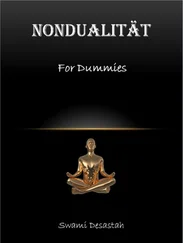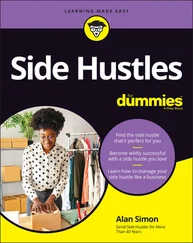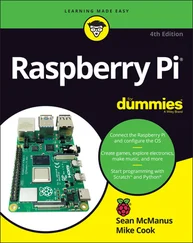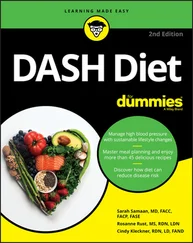Examining How Casinos Operate and Make Money: House Edge
Bad news: Casinos aren’t in the charity business. In fact, they exist to make money. Like all successful enterprises, they follow reliable business models. And the casino business model is one of the simplest and most successful of all time. With their intimate understanding of probability (and human nature), casino owners have created a catalog of entertaining games that are mathematically guaranteed to keep their pockets full and their bottom lines healthy.
 So, you can’t beat the odds when the house arranges them in its favor, but you can understand the odds of winning inside a casino by arming yourself with information about the house edge. By definition, the house edge (sometimes known as the casino advantage or house advantage ) is the small percentage of all wagers that the casino expects to win. Every game has a different house edge, and even certain bets within a single game have a better house edge than other bets.
So, you can’t beat the odds when the house arranges them in its favor, but you can understand the odds of winning inside a casino by arming yourself with information about the house edge. By definition, the house edge (sometimes known as the casino advantage or house advantage ) is the small percentage of all wagers that the casino expects to win. Every game has a different house edge, and even certain bets within a single game have a better house edge than other bets.
To put it a different way, casinos expect to pay out slightly less money to winning bettors than they take in from losing bettors. The laws of probability tell casinos how often certain bets win relative to how often they lose. Casinos then define the payout odds based on the winning probabilities — the true odds. The payouts are invariably smaller than the true odds, ensuring that, with enough betting action, the casino will take in a certain amount with every dollar wagered.
Table 3-1shows the house edge for popular casino games and how much you can expect to lose for an average three-day weekend of playing $10 a hand on the most popular table games. As you can see, the higher the house edge, the more you can expect to lose. For example, you cut your losses by 80 percent if you switch from roulette to baccarat!
This table makes a few assumptions. First, it assumes you’re playing the most advantageous bets for games like baccarat and craps. Second, it assumes optimal gameplay rules and payout odds for games like blackjack and video poker. Finally, you’re playing optimal strategy, which has a big impact on house edge in games like Let It Ride, three-card poker, and blackjack. (Check out the specific chapters later in this book for detailed strategies.) This next section looks at the three methods that casinos utilize to assist themselves in performing profitably.
TABLE 3-1The Minimum House Edge for Popular Casino Games
| Game |
House Edge |
Loss per $8,000 in Total Bets |
| Baccarat |
1.06 percent |
$85 |
| Blackjack |
0.50 percent |
$40 |
| Craps |
1.36 percent |
$109 |
| Caribbean Stud Poker |
5.22 percent |
$418 |
| Let It Ride |
3.51 percent |
$281 |
| Pai Gow Poker |
2.54 percent |
$203 |
| Roulette |
5.26 percent |
$421 |
| Three-Card Poker |
3.37 percent |
$270 |
| Video Poker |
0.46 percent |
$37 |
With some games, casinos charge a fee or commission. Baccarat is a perfect example. If you bet on the banker’s hand and win, a 5 percent commission is deducted from your winning bet. This fee tilts the odds slightly in favor of the house and ensures that the casino makes a profit at this popular table game. Other examples of the house charging a commission for a bet are the buy and lay bets in craps, where the payout odds are the same as the true odds, but the player must return 5 percent (or so) of their winnings.
Paying less than the true odds
Another way the casino makes money is to pay out less than the true odds (see the earlier section “ Factoring in the odds”). Take roulette: With 38 numbers on the wheel, your odds of guessing the winning number are 37-to-1. So, you bravely place a $100 bet on a single number and hit it. Congratulations! After you quit jumping up and down and kissing the cocktail server, dealer, and anyone else who couldn’t quickly escape, you collect $3,500.
But, wait a minute. $3,500 means a payoff of 35-to-1. What happened to the true odds of 37-to-1? The fact is, even though you win, your payoff is less than the true odds. The bottom line? Casinos take $200 out of every $3,800 wagered, which leaves the house with a hefty edge of 5.26%.
Calculating the Odds in Casino Games
If you’re good at math, you can often detect when the casino payout odds are lower than true odds. (See the section “ Factoring in the odds” earlier in this chapter.) For example, with a pair of dice, you have 36 different combinations, so it’s easy to calculate the true odds for any combination of dice. But with other games, the odds can be impossible to calculate. Take slots, for example: The thousands of possible winning reel combinations and ever-changing progressive jackpots make it difficult for anyone to calculate the odds of winning.
 Adding to the confusion around odds is the casino’s sleight of hand in their use of the word for instead of to. When you see payout odds listed as 10- to -1, it means you get paid $11 for a winning bet: $10 in profit plus the $1 you initially wagered. However, a 10- for -1 bet means your total payout is $10, resulting in a profit of only $9. For example, in video poker, a flush pays 6- for -1, which means your win of six coins includes your original wager. This small detail may seem like a silly case of semantics, but don’t underestimate its impact.
Adding to the confusion around odds is the casino’s sleight of hand in their use of the word for instead of to. When you see payout odds listed as 10- to -1, it means you get paid $11 for a winning bet: $10 in profit plus the $1 you initially wagered. However, a 10- for -1 bet means your total payout is $10, resulting in a profit of only $9. For example, in video poker, a flush pays 6- for -1, which means your win of six coins includes your original wager. This small detail may seem like a silly case of semantics, but don’t underestimate its impact.
This section ties together the joint concepts of payout odds and true odds that will get you on the road to understanding the house edge (or advantage). Armed with a full understanding of that key statistic, you’ll be able to discriminate between good and bad bets in a casino.
In almost all cases, the payoffs favor the house, and you lose in the long run. However, some bets have no edge at all — for you or the house. Then some unusual situations arise that give astute gamblers an edge.
When true odds equal payout odds, it’s called a zero expectation bet. Neither house nor player has an edge. This balance means that both sides can break even in the long run. For example, if you remove the two extra green numbers (0 and 00) from the roulette wheel, the game now becomes a zero-expectation game because it has 36 numbers — 18 red and 18 black. Any bet on red or black would be a zero-expectation bet. In other words, when you bet on one color, your chances for winning and losing are equal, just like flipping a coin.
However, casinos aren’t interested in offering zero expectation games. In order to make a profit, they need to add in those two extra green numbers to change the odds in roulette. Now, when you bet red or black, your odds of winning are  rather than
rather than  . So, your even-money bet moves from a zero-expectation bet to a negative-expectation bet.
. So, your even-money bet moves from a zero-expectation bet to a negative-expectation bet.
Читать дальше
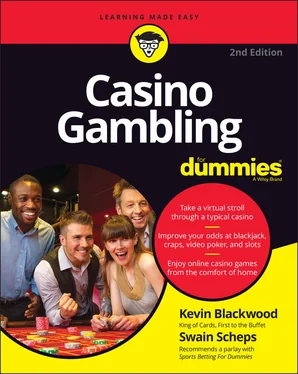
 So, you can’t beat the odds when the house arranges them in its favor, but you can understand the odds of winning inside a casino by arming yourself with information about the house edge. By definition, the house edge (sometimes known as the casino advantage or house advantage ) is the small percentage of all wagers that the casino expects to win. Every game has a different house edge, and even certain bets within a single game have a better house edge than other bets.
So, you can’t beat the odds when the house arranges them in its favor, but you can understand the odds of winning inside a casino by arming yourself with information about the house edge. By definition, the house edge (sometimes known as the casino advantage or house advantage ) is the small percentage of all wagers that the casino expects to win. Every game has a different house edge, and even certain bets within a single game have a better house edge than other bets. rather than
rather than  . So, your even-money bet moves from a zero-expectation bet to a negative-expectation bet.
. So, your even-money bet moves from a zero-expectation bet to a negative-expectation bet.
